Global Grain Reserves Are Low; Legacy of U.S. Drought
Dwindling water supplies, low grain supplies, high prices for bread, meat, milk are outcomes of one of the worst droughts in the American history.
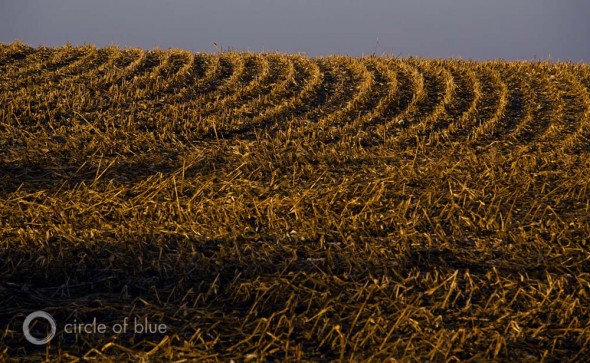
By Codi Yeager-Kozacek
Circle of Blue
The global reserves of wheat, rice, corn, and other food grains are at the tightest levels since 2007-2008, according to United States Department of Agriculture (USDA) data.
The data show that the current amount of grain held in storage is less than 20 percent of the amount consumed by the world in a year — a critical measure of the world’s capacity to feed itself known as the “stocks-to-use ratio” — and would last just 71 days.
The comparatively low grain stocks this year follow the 2012 U.S. drought, and a decade-long pattern of smaller than expected harvests that are making 21st century world food markets more vulnerable to supply shocks.
Last year, the most extensive U.S. drought since the 1950s damaged what was projected to be a record corn crop in the world’s largest corn producing country. Corn prices reached record highs.
Other recent droughts—most notably the Australian drought that destroyed one of the world’s largest export rice crops in 2007—contributed to food price spikes and a doubling of the UN’s Food and Agriculture Organization’s Food Price Index over the past decade. The index measures the international price of a basket of food commodities.
“Stock-to-use ratios are at extremely low levels in [major exporting countries], especially for grains,” Abdolreza Abbassian, secretary of the Intergovernmental Group on Grains at the Food and Agriculture Organization of the United Nations, told Circle of Blue. “When you have shocks, you immediately see a sort of violent reaction on the markets.”
–Abdolreza Abbassian,
Secretary
Intergovernmental Group on Grains, FAO
While droughts can dramatically draw down grain stocks from year to year—U.S. ending stocks for corn dropped 5.8 million metric tons (229.5 million bushels) between 2011/2012 and 2012/2013—they are not the primary reason behind the low reserve levels seen in the past decade. Instead, policy decisions by major world exporters to scale back export subsidies prompted farmers to follow market signals, resulting in fewer surpluses and lower stocks, according to Abbassian.
Global transportation systems for grains have also improved, meaning grain grown in the Southern Hemisphere can pick up the slack from a poor season in the North and countries are therefore less likely to invest in costly stockpiles.
A third factor behind low stocks is the influence of commodity exchanges, where importers and exporters now prefer to cover their risks on the futures markets rather than have physical stores of grain.
“In this environment, those who can afford to or know how to protect themselves, don’t have much to worry about because the grain is there even if stocks are low,” Abbassian said. “But for the low income countries, their vulnerability has increased far more than in the past. They could be taken more off guard today than in the 1970s world. There is an even more polarized world in terms of food. They are more exposed to a world market that is vulnerable to shocks, and this is very worrisome.”
As for what drives the supply shocks, Abbassian said 99 percent are from production-driven factors.
“It is the weather that causes the shocks, and the weather has become increasingly erratic,” he said. “Shifts in production centers then add to the problem. We are producing more, but we are not producing in the same areas as before.” Growth in areas such as China and the Black Sea region, which are already susceptible to erratic weather, is exaggerating climatic changes.
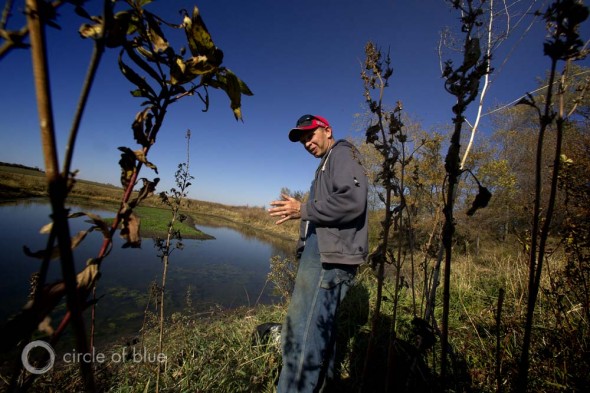
Why This Time Is Different Than 2008
In 2008, following a year in which global grain stock-to-use ratios hit 17.4 percent and a drought in Australia decimated the country’s rice crop, food riots broke out around the world. Yet experts said the crisis was largely avoidable.
“Droughts or floods are not what causes crises.It’s lack of governance,” said José Graziano da Silva, director-general of the Food and Agriculture Organization (FAO) of the United Nations, in a statement last November. “In a globalized world, we cannot have food security in only one country or in one region. We need to strengthen the global governance of food security.”
Poor weather conditions were only one of the factors that led to food riots in 2008.
“It is the bad weather that triggered production shortage, but it is long-term neglect in agricultural investment that has led to lower productivity growth in food and agricultural production,” Shenggen Fan told Circle of Blue in an email last August. Fan is director-general of the Washington, D.C.-based International Food Policy Research Institute (IFPRI). “It is also bad policy, such as export bans, that made the situation worse. Expansion of biofuel production, depreciation of U.S. dollars: all these together made a perfect storm.”
–Shenggen Fan,
Director-General
International Food Policy Research Institute
But this perfect storm did not repeat in 2012. A bumper crop of rice and an adequate global wheat harvest, lower fuel costs, and the absence of major export bans all helped to avert a crisis, according to aid agency Oxfam International. The FAO also cited the implementation of the G20’s Agricultural Market Information System (AMIS) as a factor that helped to improve transparency and calm commodity markets. Regional grain reserves, like the ASEAN+3 emergency rice reserve, can also help to mitigate price shocks.
Food Prices Still High, Grain Stocks Still Low
Despite these measures, food prices remain high and volatile. The April Food Price Index, published by the FAO, was 215.5 points — only 9 percent below its 2011 peak of 238. In 2012, the third food price spike in four years occurred, mostly due to corn and soybean prices that hit record highs — $US 334.23 per metric ton ($US 8.49 per bushel) of corn and $US 659.18 per metric ton ($US 17.94 per bushel) of soybeans.
The higher price trend continues this year. The season average corn price and the season average soybean price for the 2012/2013 marketing year could be as much as 15 percent higher than the season average prices in 2011/2012.
“Right now, we do not have effective policies to mitigate these shocks at the global level,” Fan said. “We have seen individual countries [try] to isolate from global shocks. By doing that, it actually exacerbates global price volatility and spikes.”
A news correspondent for Circle of Blue based out of Hawaii. She writes The Stream, Circle of Blue’s daily digest of international water news trends. Her interests include food security, ecology and the Great Lakes.
Contact Codi Kozacek

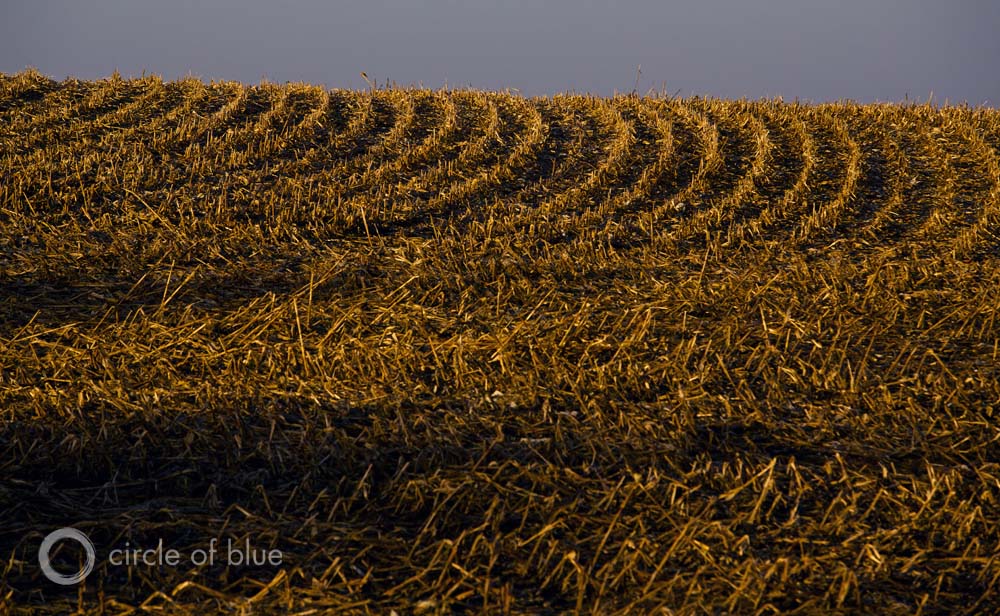

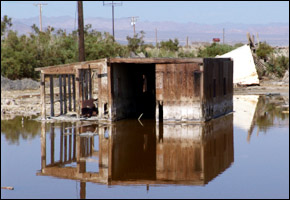

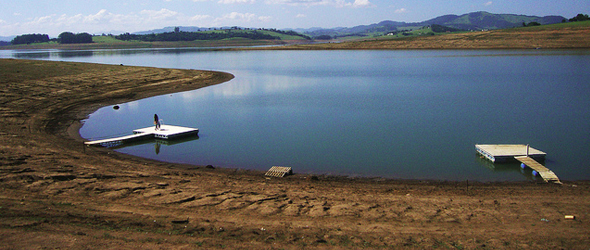




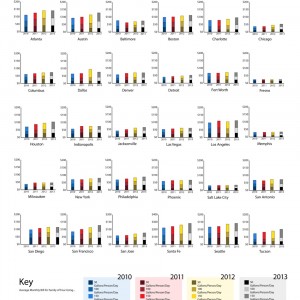
When there was a corn crop disaster in the fall of 2012, due to drought, Goldman Sachs reported:
http://www.bloomberg.com/news/2012-12-11/tightest-corn-crop-since-74-as-goldman-sees-rally-commodities.html
Now, that we’re six months into this “disaster”, we have:
http://www.marketwatch.com/investing/future/corn/charts?symb=CZ3&countrycode=US&time=9&startdate=1%2F4%2F1999&enddate=6%2F11%2F2013&freq=1&compidx=none&compind=none&comptemptext=Enter+Symbol%28s%29&comp=none&uf=7168&ma=1&maval=50&lf=1&lf2=4&lf3=0&type=2&size=2&style=1013
Nothing. Not a thing, because the market adjusted for the lack of corn grown in the US, and corn was planted and harvested elsewhere in the world to make up for the loss. Another in a never ending series of red-herrings.